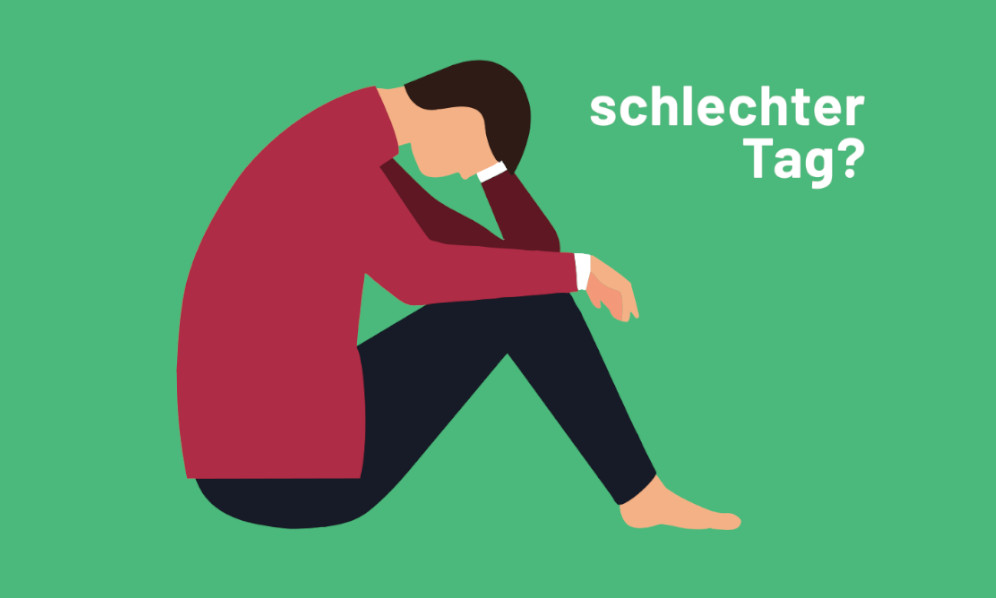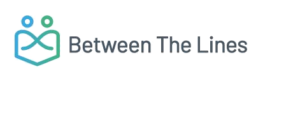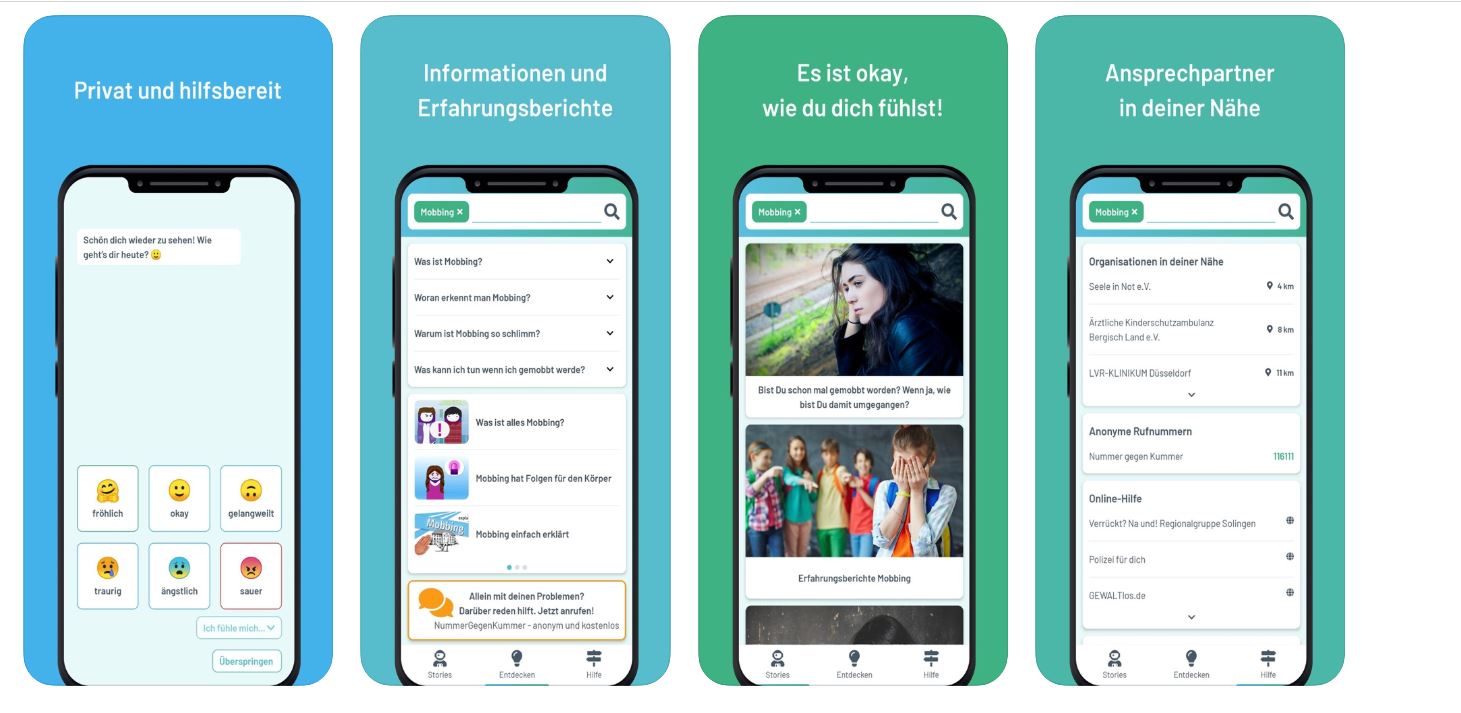A lifeline for troubled young people via chatbot

Many young people feel left alone with their problems and have no one to talk to about them. The COVID-19-related social distancing does not make things easier. The app Between The Lines offers uncomplicated help via an anonymous app, and can serve as a great example of making help for young people more accessible.
Child and youth welfare is on the raise
Lovesickness, worries at school, loneliness, cyberbullying, stress with parents, drug use or uncertainty about sexual orientation. Teenagers deal with a variety of problems. In addition, the susceptibility to depression is particularly high among young people. What to do?
Fortunately, today there exist youth welfare services in most parts of the world. The non-profit organization Child Helpline International teamed up with 173 help services from 142 countries around the world. Coordinating information, viewpoints, knowledge and data, they support the different organizations, who before used to do much of their work alone. They are strengthening the voice of the 20 million children who seek support every year from the child help organizations also by bringing the children’s issues to policy makers and influencers.
What is the use of help services that are not found?
With this contribution we want to enrich the discussion. We feature an innovative initiative, which tackles the challenge that those in need often do not know about or have the courage to contact the respective support organization.
“Many young people have no idea how much help is actually available in their city.” Oliver Kröger, Co-Founder Between The Lines
In Germany we have a dense network of aid organisations, clinics, advice centres, emergency numbers or even emergency sleeping places. Many of them are specifically aimed at young people. The problem: many of the offers and initiatives are not known and are not – or not at the right moment – found by the young people concerned. Offers such as the children and youth telephone (“Nummer gegen Kummer“) are a basic building block of youth welfare in Germany. However, in a world in which young people are online on average 58 hours a week and chat much more than use the telephone, young people are increasingly falling through the cracks. The inhibition threshold to pick up the phone and dial the number against grief is much higher than downloading an app – especially if it is made by young people for young people.
We talked about this with Oliver Kroeger, who together with Nick Wüsthoff and other young programmers has developed an app that supports young people in difficult situations, with questions, worries and crises. All quotes, unless otherwise indicated, are from him, including the following question, which Oliver Kroeger asked at the Youth Council in Solingen and which subsequently provided the impetus for programming the app:
“What do you actually do when you feel really bad?”
Between The Lines is supposed to make help offers accessible for young people and thus build a digital bridge to the youth welfare system. Many young people have no idea how big the help available in their city really is. At the same time, many associations and initiatives report that they do not know how to reach young people. The app wants to close this gap in the provision of information and thus make an important contribution to ensuring that young people receive help at an early stage and at low-threshold levels. Often a suitable social offer for young people is the missing anchor that can help to get out of a mental disorder – or not to get into it at all.
Hey, I have a problem
Talking about problems can be very difficult. For example, because shame, fear of stigmatisation or an incomplete understanding of the problem blocks access to help. Sometimes problems are too diffuse to explain. Especially when it comes to psychological stress, the hurdle for young people to ask for support in their own environment is high.
Between the Lines wants to remedy this situation. In addition to addresses of aid organisations, the app has a colourful information landscape with 21 topic categories relating to youth concerns and psychological problems. Mobbing, eating disorders, parental separation, sexuality – the topics are broadly diversified and presented in language suitable for young people. Those who do not dare to talk about their problems at the moment will find low-threshold answers and help here.
“Unfortunately, mental illness is still stigmatised. We want young people who have problems to know that they are not alone and that help and solutions are available.”
Between the Lines wants to inform and thus contribute to helping young people to better understand their concerns and to normalize mental illness. Ultimately, young people should find the help they need at an early age. Whether someone is in a mental crisis and needs support, or someone is bored and is looking for leisure activities, the app covers a wide range of needs.

Artificial intelligence and real people who help
A central element of the app is its chatbot, which accompanies you through the app landscape. This way, artificial intelligence helps to recognize where the shoe pinches and with which offer the best help can be provided. Through the dialogue with the chatbot, the app can also identify clues that indicate a particular urgency such as a suicide risk and encourage the young person to seek external help.
One special feature is an information platform with videos and texts on various topics concerning young people. For example, if you have a question about bullying, sexuality, education or parental separation, you may already be able to get direct help. All information is compiled by mental health professionals and translated into language suitable for young people.
“Our heroic stories show that you’re okay just the way you are.”
An own part of the app is dedicated to heroic stories. Between the Lines has been scouring the Internet and social media and has put together a collection of videos with personal stories of people who experienced depression or eating disorders as teenagers. The stories and advice are intended to give young people new courage and self-confidence – and above all to give them the feeling that they are not alone with their worries.
Meanwhile, the user* remains anonymous and can easily click through the different topics without having to explain the problem directly to someone, which is often already a hurdle for young people.
“Anyone can use the app without having to explain exactly what the problem is.”
But if you need personal contact and want to talk to someone, you will find numbers and addresses with contact points nearby. From crisis hotlines to regional leisure activities, groups where you can make contact and advice centres, Between The Lines publishes detailed information about 1200 aid organisations throughout Germany. This number is expected to increase significantly in the near future.
A cooperation with students of the CODE-University
The two founders are an unusual team. Nick Wüsthoff is a student at CODE University in Berlin, where he is currently writing his final thesis. Oliver Kröger is a specialist in child and adolescent psychiatry in Solingen. The team’s strength lies in the combination of two very different talents. With their app, the two are breaking new ground. There is no other online portal in Germany that collects all the data and addresses that are important for young people in crises and difficult moments.
“We are breaking new ground with this app.”
Through his work in child and youth psychiatry, Oliver Kroeger is very concerned with the mental health of young people. He therefore initiated a project group in the youth city council of Solingen in 2015. Together with nine young people, one of whom was Nick Wüsthoff, they dealt with the question of what young people do when they are in really bad shape. The idea of an app quickly developed from this, the prototype of which was successfully launched in Solingen in early 2018. Shortly afterwards, Nick Wüsthoff began his studies at CODE University in Berlin and set about completely reprogramming the app together with some of his fellow students. Between The Lines can thus look back on a 5-year development phase.
In retrospect, it seems to be a lucky choice that Oliver Kroeger and Nick Wüsthoff got together. Because the CODE University in Berlin combines the world of digitalization with a high social standard and wants to educate the digital pioneers of tomorrow.
“Learn how to use digital technologies to make the world a better place.” Claim of CODE University Berlin
Thus Between The Lines benefits from CODE’s digital expertise, while the content is provided by youth welfare professionals. To ensure the user experience is right, the programmers conducted surveys in schools to find out how young people would like to use such an app. Therefore, the idea of a chatbot was born, which welcomes the users* at the beginning and guides them through the app.
How it goes on
All the work behind the scenes of the app was and still is completely voluntary. Meanwhile Between the Lines is a non-profit association. Financially, the project is completely dependent on donations or prize money. The app has already won several prizes, such as the first prize of the Social Entrepreneur Take Off Pitch.
“We started in North Rhine-Westphalia and are now going to many new regions and cities, such as Dresden or the Lake Constance district”. Oliver Kroeger, Between The Lines
Currently, the founders and their team are in the process of expanding the regional connections in Düsseldorf, Cologne, Dresden, Lower Franconia and Upper Franconia, in the Hochtaunuskreis and in Lake Constance-Oberschwaben. Although the app already works throughout Germany with the basic functions of chatbot, information portal and Held*innenengeschichten, it also offers users the most important telephone numbers and addresses throughout Germany. However, further work and support is needed to present the regional offers in a comprehensive way.
A strong financing partner has not yet been found for this. Oliver Kröger sees the social sector as having a responsibility, especially the health insurance companies as well as politics. After all, the app ultimately helps to achieve massive cost savings in the healthcare sector. The figures speak for themselves. The number of patients in the field of child and adolescent psychiatry has risen continuously in recent years. Health insurance companies have to spend an estimated 3 billion euros annually on the care of young people in the fully inpatient area of child and youth psychiatry alone, and the trend is rising.
“The health insurance companies could play a central role in the continued financing of our services.”
Between the Lines is currently in dialogue with health insurance companies and the federal ministries for digitization in Hesse and Bavaria in order to exploit further financing opportunities. They are looking for a business model that will allow them to further develop the smartphone app and extend the information services to as many other regions as possible. The desire is to map the local offers throughout Germany in a detailed and comprehensive manner, even for small regions.
This much is certain: continuing the project in the long term as a purely voluntary project that grows in very small steps would be the wrong way to go. The app is too good and too important for that as a basic service, which scores points especially because it reaches almost all young people and leaves no one behind.

Further initiatives at home and abroad
Other services in crisis consulting already exist in Germany and other countries. Here is a small overview and the differences.
Kinder- und Jugendtelefon. The telephone hotline for children and adolescents in crisis situations, managed by the non-profit association Nummer gegen Kummer, can look back on a 40-year history. The range of topics is similarly broad as that of Between The Lines and should be the first point of contact for many who need a real contact person.
Telefonseelsorge: Telephone counselling supported by the Federal Ministry, which offers advice for people in need from professional counsellors on the telephone, in a chat room and via email. Here you have to make an appointment for a chat conversation and wait for a few hours.
KrisenKompass: an app from the Telefonseelsorge, which is aimed specifically at suicidal people or people who want to help suicidal people.
Crisis Textline: In the USA, Canada, Ireland and the UK there is the award-winning app Crisis Textline, where trained volunteers answer text messages from young people in need. It has been a success: in the almost 7 years since its inception, the organisation has processed more than 100 million text messages.
ForTheFrontLines: An app that was developed during the Corona crisis in conjunction with Crisis Textline specifically for people on the Front Lines. People who are especially challenged during the corona virus epidemic, such as doctors, nurses, or other people who are plagued by fear and loneliness.
Infocklick.ch: The Swiss organisation is aimed at young people and children. The focus here is not so much on crisis aid, but rather on supporting ideas that want to be put into practice. Similar to Between The Lines, the website functions as a platform to connect young people with the right contacts and youth projects. Here young people find encouragement when they are stuck and inspiration on how to get involved and make their ideas a reality. Infoclick ch. Is used by 150,000 young people every year and about 500 youth projects participate.
Notrufnummer 147: In Austria and Switzerland, 147 has established itself as an emergency number for children and young people, which can be reached anonymously 24 hours a day. It is managed by non-profit organisations, Rat auf Draht in Austria and pro joventute in Switzerland.
——
We are happy to support Between The Lines together with the Gexsi Users. If the idea inspires you, feel free to share the blog article on your social media platforms.
How the Gexsi Team evaluates the initiative of Between The Lines and what we see as its positive social impact, you can check out our Project Scorecard here.
Support Between The Lines!

Search now with Gexsi and currently support the project Between The Lines – help for youth via chatbot!
![]()
Gexsi – the search engine for a better world
Your searches generate money for projects that make the world a better place.
Sources:
https://projekte.uni-erfurt.de/cosmo2020/cosmo-analysis.html#14_ressourcen_und_belastungen
https://www.spiegel.de/gesundheit/psychologie/coronavirus-auswirkungen-des-corona-lockdowns-auf-die-psyche-a-2ba964d0-1538-45a9-ba88-c7581c924674
https://www.gruenderszene.de/business/interviews-studieren-und-gruenden-code-university-2019-11410
https://youpod.de/de/beitraege/2017/09/jugendrat-app-between-the-lines-hilft-jugendlichen-in-not
https://www.faz.net/aktuell/gesellschaft/menschen/jugend-digitalstudie-2019-jugendliche-sind-58-stunden-pro-woche-online-16423200.html


